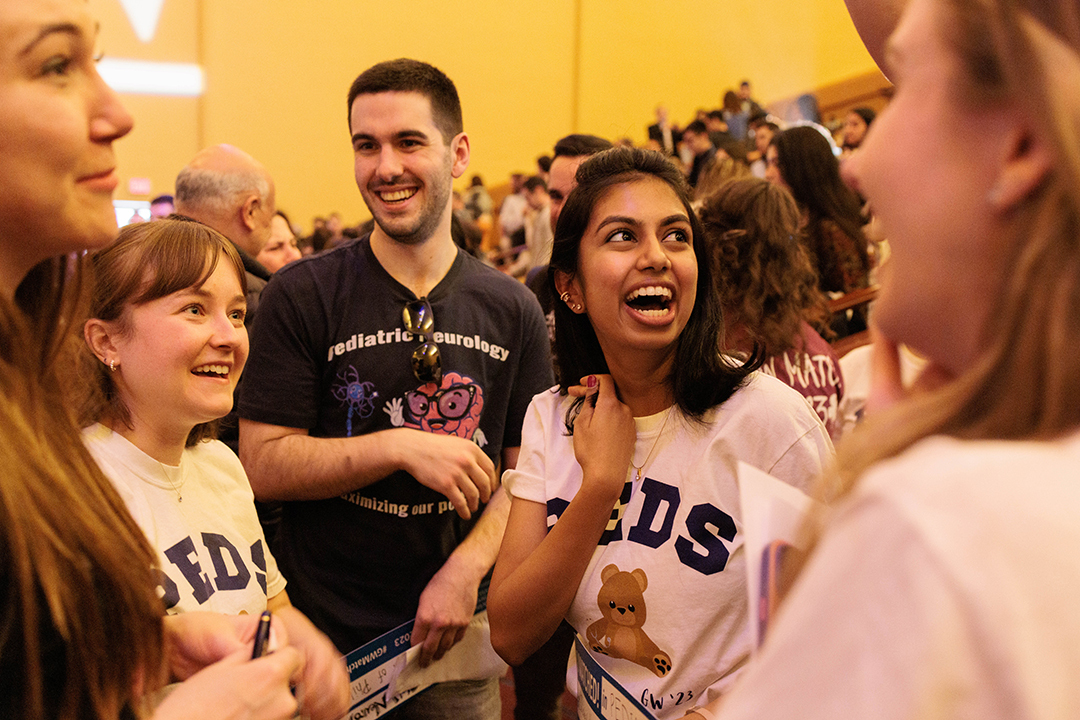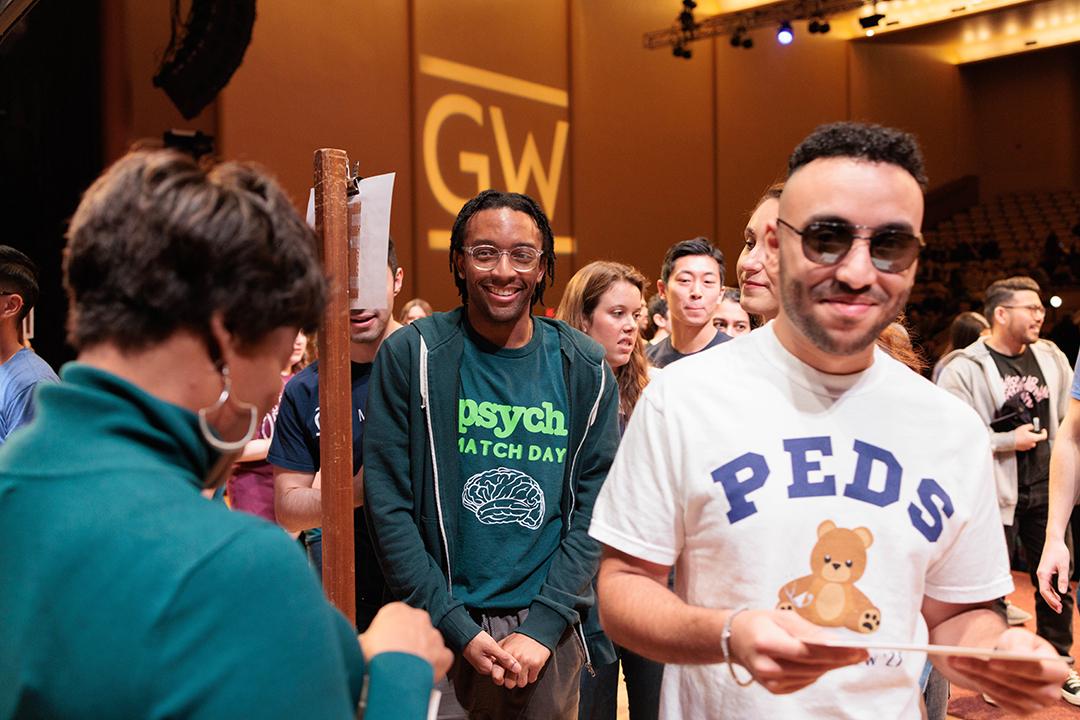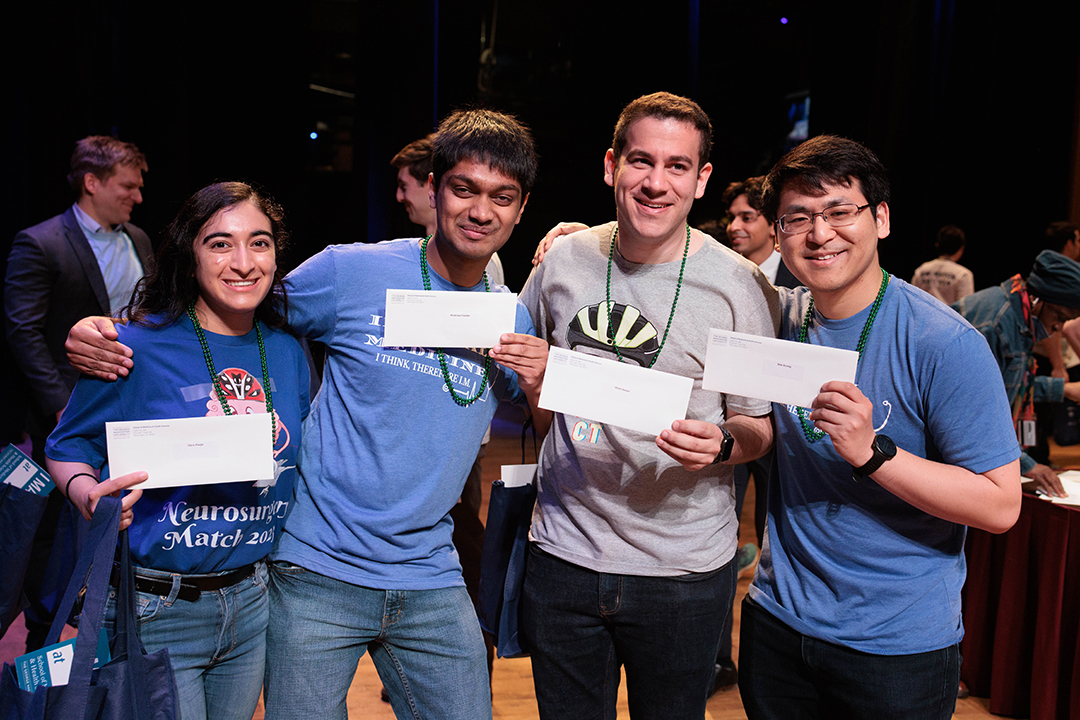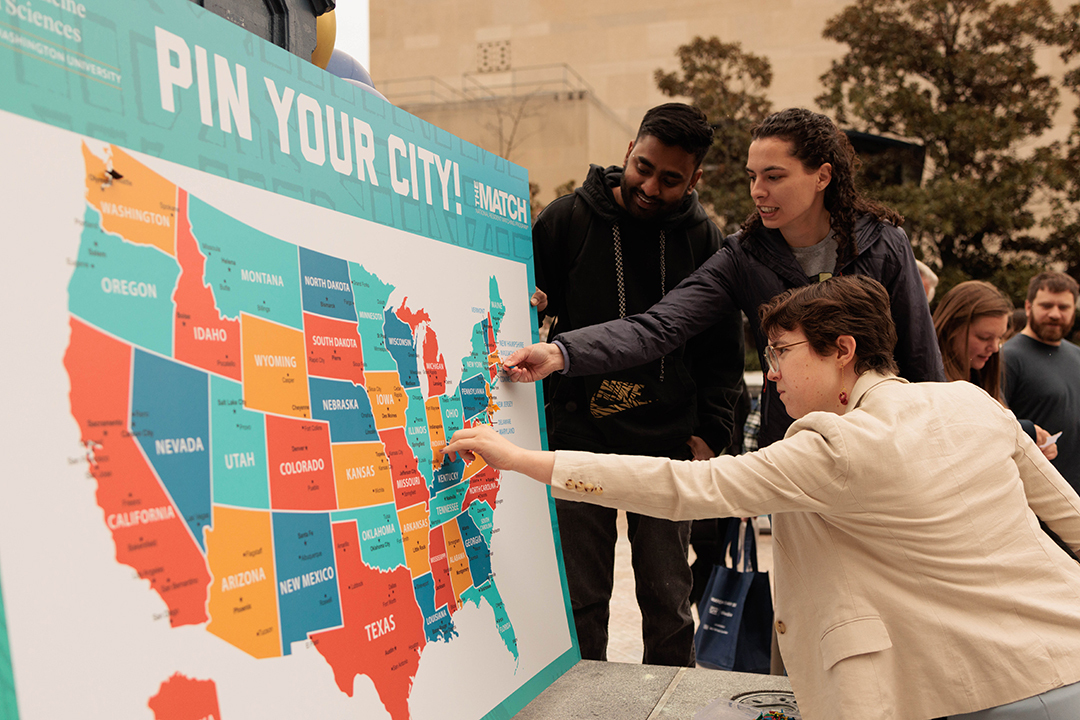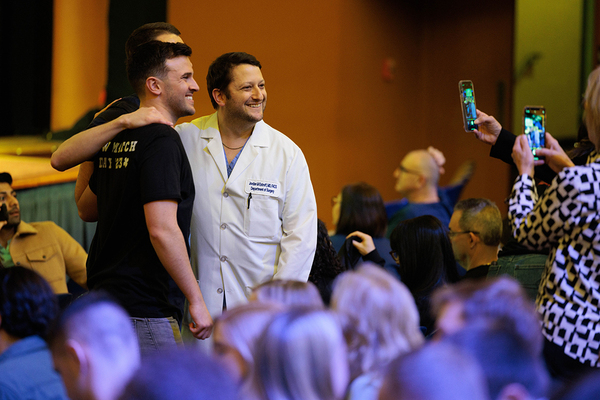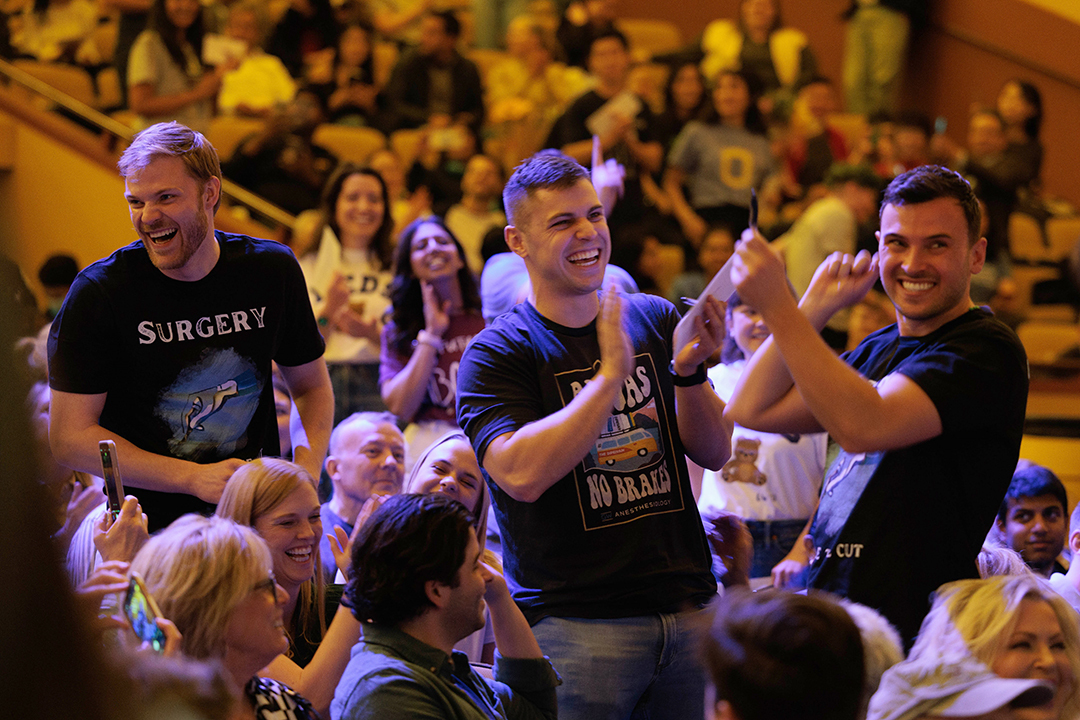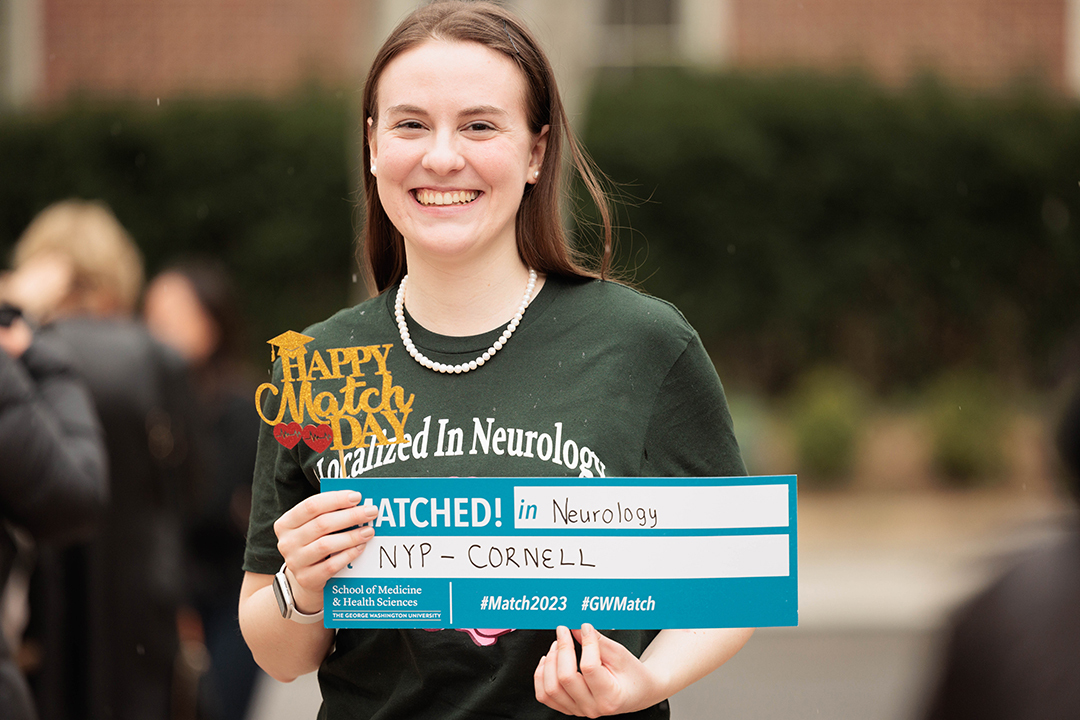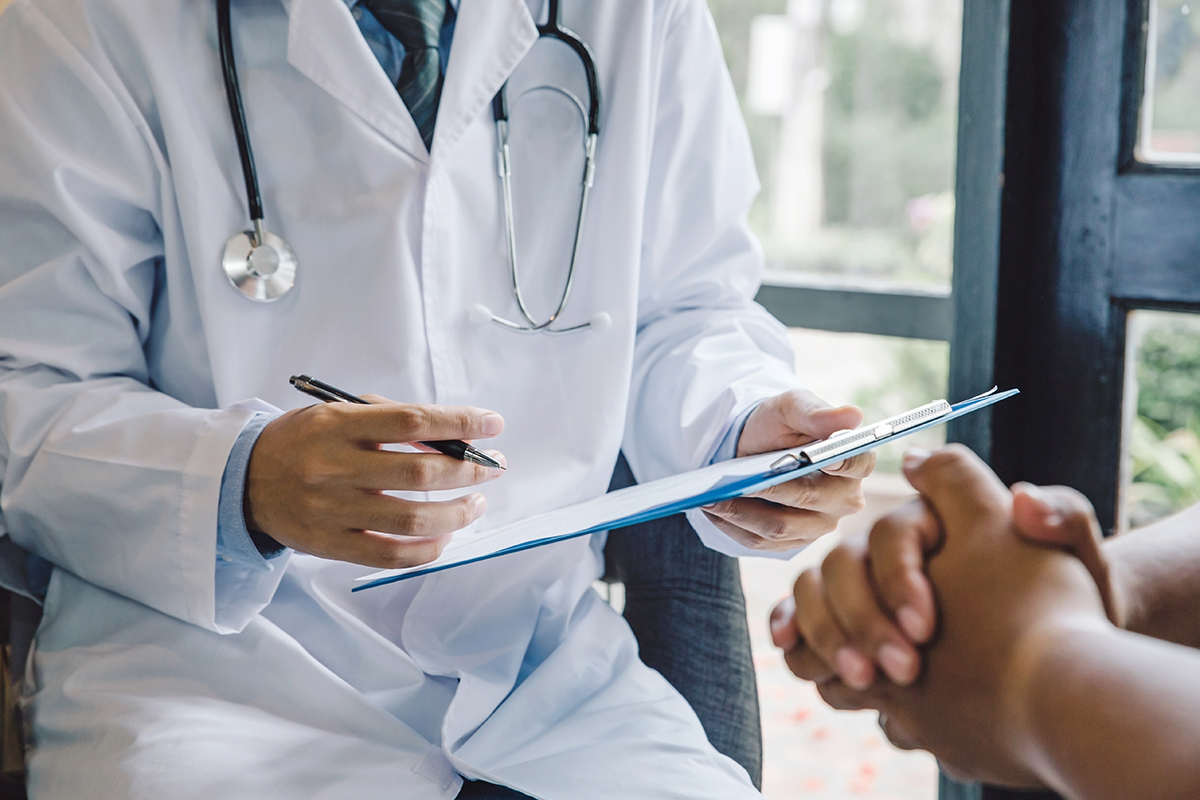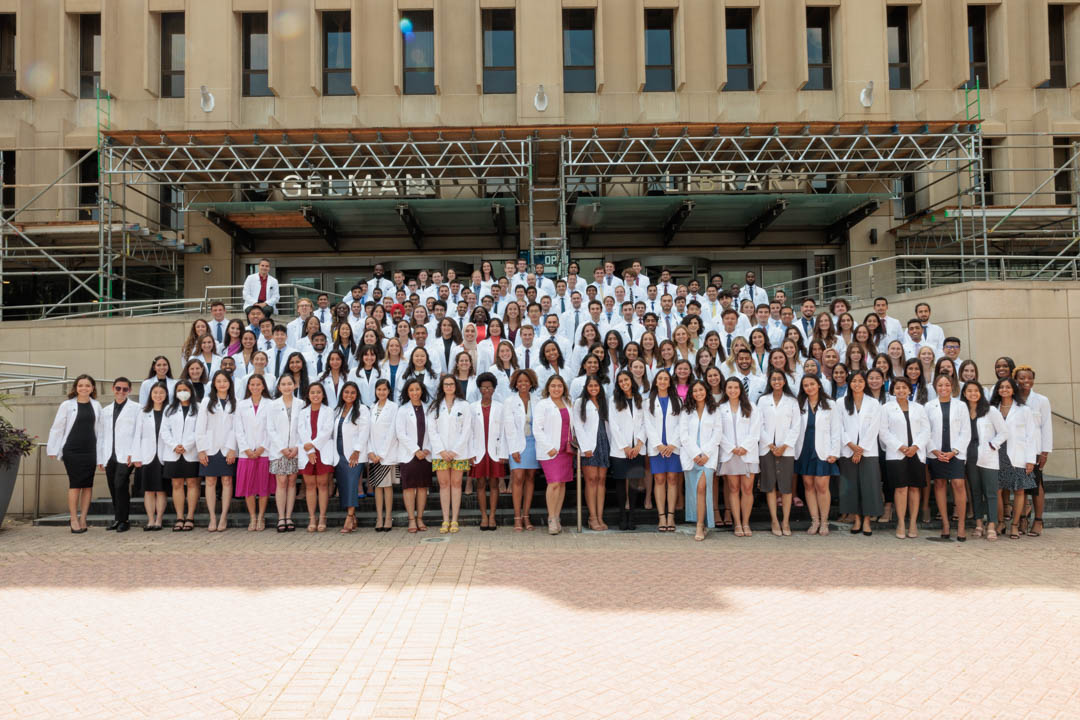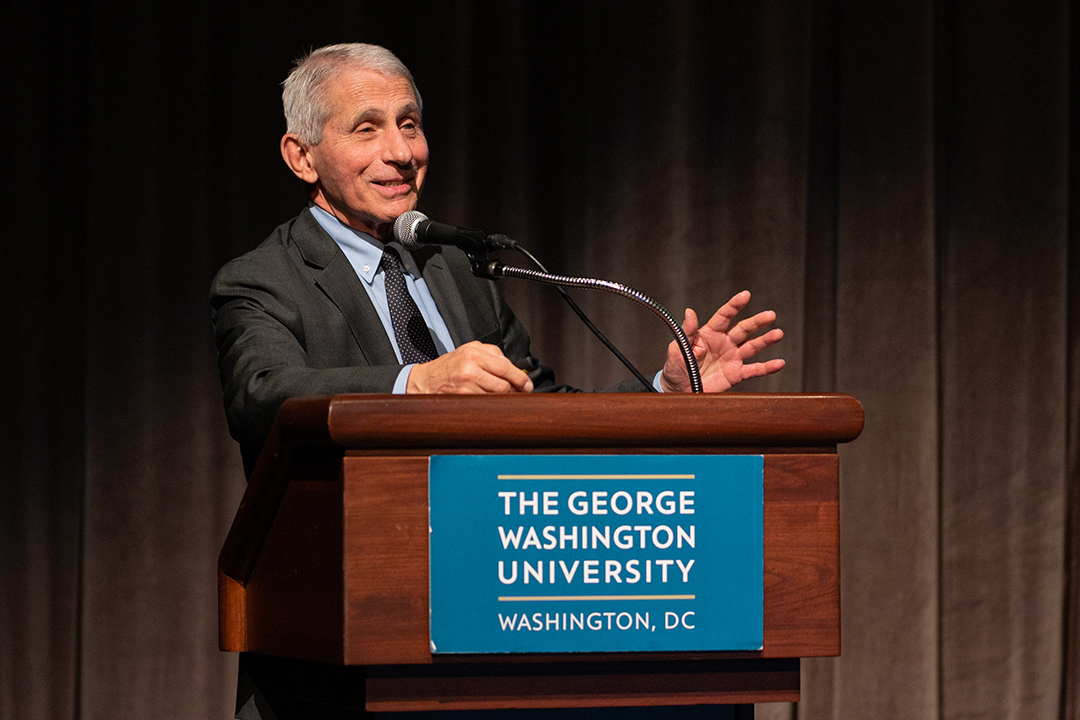Members of the George Washington University School of Medicine and Health Sciences (SMHS) M.D. Class of 2023 joined a record 42,952 other applicants anxiously awaiting the most important news to date in their fledgling medical careers—results of the National Residency Match Program (NRMP).
With the opening of their envelopes at noon EDT March 17, medical students across the country learned where they will continue their training as physicians.
“I can’t give you the details, because we can’t open the letters just yet, but GW has done some historic things, and I’ll leave it at that,” Lorenzo Norris, associate dean for student affairs and administration and associate professor of psychiatry and behavioral sciences, said as the clock ticked toward noon. Working the crowd like a seasoned performer, Norris welcomed the students, family and friends then teased them with a sample of the regions and states boasting large matches of GW students, with each hint drawing huge cheers from the students and their families.
“Having seen the list of the places where you are going to be, you’re all going to great places,” added Barbara L. Bass, RESD ’86, professor of surgery, Walter A. Bloedorn Chair of Administrative Medicine, vice president for health affairs, dean of SMHS and CEO of The GW Medical Faculty Associates.
“I’m a great believer in the concept of blossoming where you’re planted,” she told the students. “Make friends, do the work, live well and enjoy the moment.”
For GW’s M.D. Class of 2023, 174 students matched in specialties at leading residency programs across the country, including Brigham and Women’s Hospital, Albert Einstein Medical Center, Naval Medical Center-San Diego, New York Presbyterian/Weill Cornell Medical Center, as well as GW. While specialties such as pediatrics, internal medicine, obstetrics-gynecology, psychiatry, and emergency medicine dominated the match, smaller programs including pediatric neurology, interventional radiology and urology were well represented and six members of the class participated in the military match, where they will continue their training in the armed services.
2023 GW Match Day from The George Washington University on Vimeo.
The annual event not only caps four years of medical school, but it also concludes a year-long sprint to finish, when students embark on a high-stakes interview process to find the ideal program to complete their training and mold them into the medical specialists of their choosing.
The science of match day, established by NRMP in 1952, is based on a Nobel Prize-winning algorithm that pairs medical student preferences with those of residency programs to ensure each gets as close to their top choices as possible. The art of the match, however, begins much earlier, and the criteria for identifying that perfect residency is as varied as the students and their potential specialties. Applicants weigh prestigious programs across the country against a variety of personal preference ranging from geographic location to research opportunities and finish it off with a dose of gut instinct.
“It’s a very long process. It begins almost when you first start medical school,” said Julie Thomasian, B.S. ’19, who matched at GW in medicine-preliminary/ophthalmology. “You have to be thinking about all of it, even before you even know what you want to specialize in.”
For Thomasian, location was key. A native of Potomac, Maryland, she knew she wanted to be near her family and build a career serving the community she knows well, and as a soon-to-be two-time alumna, she knew a pretty good place to accomplish that.
“GW has given me so much,” she explained. “There is really no better place to learn medicine, and this is the community and the patient population that I want to give back to and care for.”
Friend and classmate since elementary school, Kimia Zarabian, B.S. ’19, matched at the University of Washington in Seattle, the top-ranked program in the country for her specialty, according to Becker’s Hospital Review. Zarabian will train in physical medicine and rehabilitation. For her, the chief criteria were a residency offering research opportunities and good fellowship matches afterward.
“The program has an amazing reputation, they’re very well established,” she said. “They have very strong faculty and have opportunities for everything. And, I got really good vibes from the residents who were there.”
Going with her gut played a part in Gloria Gutierrez’s decision making as well. She narrowed her search to the Northeast to be as close as possible to her boyfriend who is in his intern year in the Philadelphia area, but she had a long list of professional and patient requirements as well.
“Aside from the caliber of the program, I was looking for a really inclusive program serving a very under-reached patient population,” said Gutierrez, who matched in pediatrics at her top choice, Children’s Hospital of Philadelphia (CHOP). “When I interviewed with them, I just really felt like it was a family. They really went out of their way to make me feel valuable, and I think when you’re in such a high stakes situation, feeling like you are a human being matters. It felt like home.”
For many students, before beginning their search for a residency, they first had to find a specialty, spending much of their third-year rotations to discover that passion. That wasn’t the case for Alexander Dick, who matched in pediatric neurology at CHOP.
After completing his bachelor’s degree, Dick worked as a research assistant at Children’s National Hospital under William D. Gaillard, the division chief of neurology. Although he did his best to explore other options for potential specialties, that early experience, he said, had a significant impact on his choice.
“They were the most amazing, compassionate doctors I’ve ever seen, and Dr. Gaillard has been an amazing mentor and friend,” he recalled. “That stuck with me. I tried to keep an open mind about specialties going through medical school, but every time I came back to neurology, and eventually I just decided that was it.”
Closer to home, GW’s 47 accredited residency and fellowship programs filled all 112 positions in the match. The new residents come to the university from 53 U.S. medical schools from across the country and eight international programs, and 21 of the new residents are GW medical alumni.


